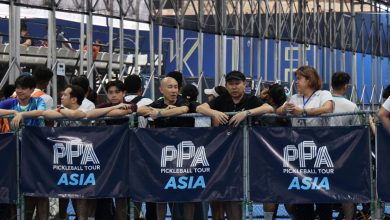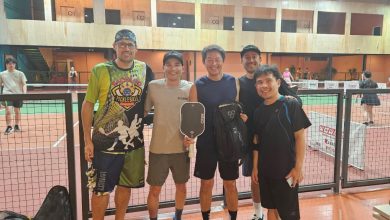Pickleball Paddle Review Terminology Explained

When investing in a new paddle, you want to understand a bit about it before “biting the bullet”
So, if you are anything like me, you jump onto YouTube and look for paddle reviews.
And if you are anything like me, your eyes glaze over as the reviewer spouts Twist weight, swing weight and spin rating numbers, and you wonder if you are in the market for a new paddle or whether you just enrolled for a physics lesson.
So, if, like me, you are not a pickleball paddle statistics geek, I have broken down what these terms mean so you can decipher whether any given paddle is right for you.
Paddle Types
Control – Soft feel and more ability to absorb pace off the ball, enabling more control for the slow game, dinks and resets but lacks power.
All-Court – Delivers you a general mix of power and control, giving you fair to good performance in all aspects without excelling at any one thing.
Power – Should have a firmer feel (often thin paddle depth) delivering very strong power but making it harder to control shot accuracy.
Generation
Gen 1 – these paddles are manufactured using a cold press process with glue to bond the paddle together Gen 2 – these paddles use a process called thermoforming to bond the paddle together
Gen 3 – These paddles also use thermoforming but also have foam injected into the core, usually making the power more powerful than earlier generation
Swing Weight.
The heavier the swing weight, the more power the paddle will generate when you swing to hit the ball.
A heavier swing weight will take more effort from you to swing the paddle, which could lead to more elbow and arm injuries.
A lower swing weight makes it easier to swing the paddle but will generate less power on your shot.
Twist Weight
A heavier twist weight will mean the paddle is more stable when you strike the ball because it takes more force to twist the paddle in your hand.
A lighter twist weight will mean the paddle twists more when you hit the ball further away from the centre of the paddle (potentially leading to mishits or out balls.
In essence, a higher twist weight means a bigger sweet spot, but this may come at the expense of manoeuvrability, meaning it may compromise speed to react to balls during a net shoot-out.
Spin Rating
This is how much spin the paddle can generate on the ball. It measured in revolutions per minute.
At the current time with current technology, this is how the amount of spin generated is categorised
- Very High: 1950 or higher
- High: 1900–1950
- Medium: 1850–1899
- Low: 1849 or less
Most people find medium spin serves their needs.
Pop
The official way to calculate Pop is to measure the speed of the ball in MPH as it comes of the paddle from a punch volley.
What does it actually mean for you? It’s how quickly the ball rebounds when it hits your paddle with little or no backswing.
If you have a lot of Pop, then you will get speed and power on your punch volleys – however, the compromise is that it becomes harder to control resets and soft shots.





